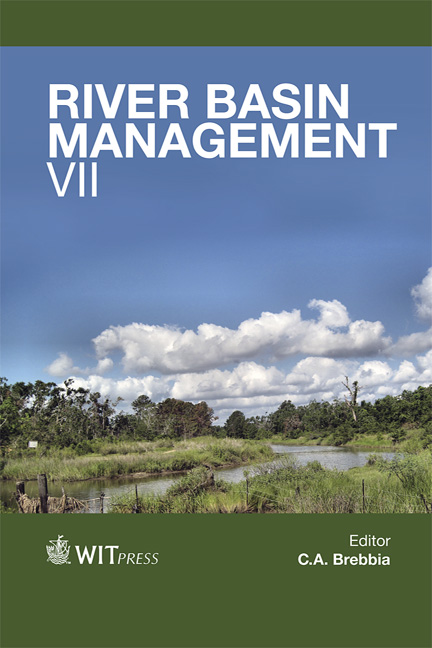Trends In Hydro-climatic Variables And Dissolved Oxygen Of The River Periyar, South India With Potential Impacts Of Global Warming
Price
Free (open access)
Transaction
Volume
172
Pages
10
Page Range
387 - 396
Published
2013
Size
145 kb
Paper DOI
10.2495/RBM130321
Copyright
WIT Press
Author(s)
E. Lakshmi & G. Madhu
Abstract
The study has aimed to evaluate the changes in air temperature, surface water temperature, rainfall, discharge (flow) and dissolved oxygen during the last 30 years in Periyar River, the longest river in Kerala, from a climate change perspective. Trend analysis is carried out on the 30 year annual average data of hydro-climatic variables (air temperature, surface water temperature, discharge, rainfall, and dissolved oxygen) of the river to forecast scenarios for 2020, 2040, 2060, 2080, 2100. Statistical analysis, correlation and simple linear regression are performed on the secondary data to derive equations relating to hydroclimatic variables. Emission scenarios, hypothesized for South Asian countries in the Global Circulation model output given in the Intergovernmental Panel on Climate Change (IPCC) report 2007, are then applied in the equations so derived, to predict surface water temperature and discharge of the river. The projections for dissolved oxygen, surface water temperature, and discharge are carried out using a time series model through SPSS 6.1 software. From the trend analysis we could infer that for each scenario considered there is an increasing trend for all variables except for dissolved oxygen. Time series model indicates that there is reduction in dissolved oxygen and an increase in discharge and surface water temperature of the river by the year 2100. It is apparent from the results that the dissolved oxygen is found to decrease with an increase in surface water temperature. Such inferences will be helpful in modifying the current management plans in practice and for deciding future management plans which are to be implemented, in mitigating the effects on the already polluted river.
Keywords
climate change, hypothetical scenario, hydro-climatic variables, river water quality, simple linear regression, time series model, emission scenarios





